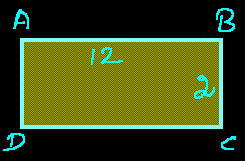Positive and Negative numbers are important concepts in arithmetic. A number that is greater than 0 (zero) is called positive number. On the other hand, any number that is less than 0 are called negative numbers. A positive number can be written with the plus sign in front of the number or just as a number. For example: 1, 2, 3, 4 …….n. A negative number is written with the minus sign in front of the number. For example: -1, -2, -3, -4…..-n. There are different rules of operations for positive and negative numbers. The basic sets of rules are the addition and subtraction rules of arithmetic for positive and negative numbers. Let’s have a look at the same in this post.
Adding Positive and Negative Numbers
Positive + Positive = Positive: The sum of two positive numbers is equal to a positive number. For example: (2 girls’ vest ) + (3 girls’ vest) = 5 girls’ vest.
• Positive + Negative = Negative: The sum of one positive and one negative number results a negative number. For example: (2 toddler shoes) + (- 5 toddler shoes) = - 3 toddler shoes.
• Negative + Negative = Positive: The sum of two negative numbers results a positive number. For example: (- 2 online baby stores ) + (- 2 online baby stores) = 4 online baby stores.
• Negative + Positive = Negative: The sum of one negative and one positive number results a negative number. For example: (-3 apples) + (5 apples) = - 2 apples
Subtracting Positive and Negative Numbers
• Negative – Positive = Negative: When a negative number is subtracted by a positive number, the result is negative. For example: (-8baby shoes) – (3 baby shoes) = -11 baby shoes
• Positive – Negative = Positive: When a positive number is subtracted by a negative number, the result is positive. For example: (8 baby slings) – (- 5 baby slings) = 13 baby slings.
• Negative – Negative = Negative: When two negative numbers are subtracted, the result is negative. For example: (- 5 oranges) – (- 5 oranges) = - 10 oranges.
These are the rules of addition and subtraction for positive and negative numbers.




